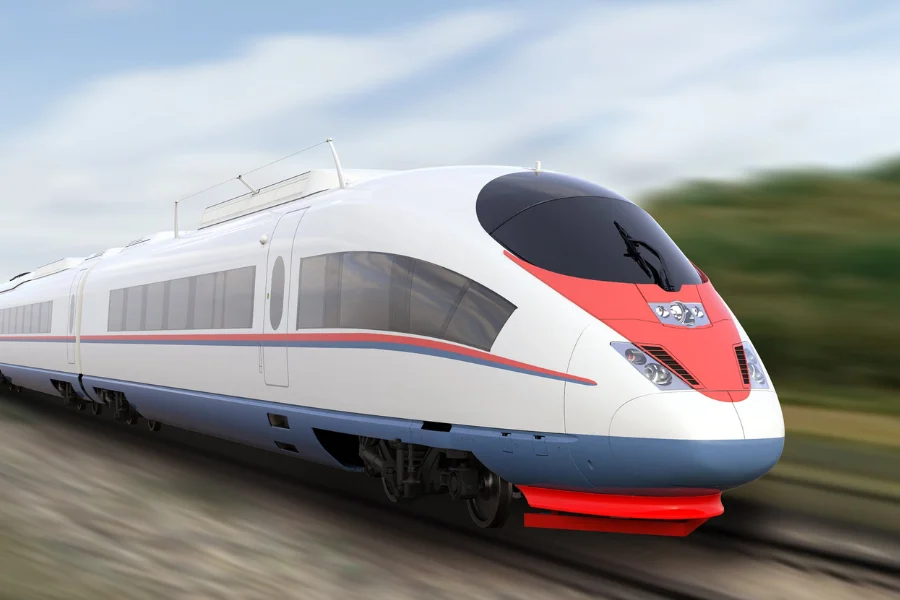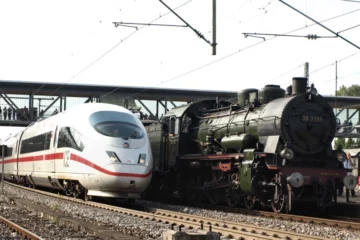All Aboard! Exploring the Fascinating History and Evolution of Trains

Evolution of Trains | Bebevy
All aboard! The world of trains is a fascinating one, steeped in rich history and filled with incredible stories of innovation, adventure, and progress. From the earliest steam engines to the high-speed bullet trains of today, the evolution of trains has been a testament to human ingenuity and perseverance. But trains are more than just a mode of transportation – they are a symbol of connection, linking people and places across vast distances. Over the years, trains have played a pivotal role in shaping the world we live in, from fueling industrial expansion and economic growth to providing a means of escape and adventure for travelers. In this article, we will delve into the captivating history of trains, exploring their evolution from humble beginnings to the marvels of modern engineering that we know today. So grab your ticket and take a journey through time as we explore the fascinating world of trains.
The Early Beginnings of Trains
The idea of using rail for transportation dates back to ancient times when wooden rails were used to move heavy objects. However, it wasn’t until the 19th century that the steam engine was invented, which revolutionized transportation. The first steam engine was invented by George Stephenson in 1814. It was used to transport coal from mines to factories, and it was the first time that a steam engine was used for transportation.
The steam engine was a game-changer for transportation. It was able to cover long distances at a faster speed, making it easier to transport goods and people. Railways quickly became popular, and soon, trains were used for transportation all over the world. The first steam-powered passenger train was invented in 1825, and it was used to transport people from Stockton to Darlington in England.
The early trains were powered by steam engines, but they were not very efficient. They were slow, and they required a lot of fuel to run. However, they paved the way for the development of more efficient locomotives, which would become the backbone of rail transportation in the 19th century.
The Impact of Trains on Society and Transportation
The development of trains had a profound impact on society and transportation. Trains made it possible to transport goods and people across long distances quickly and efficiently. This led to the development of industries and businesses that were dependent on rail transportation.
The railway system also made it possible for people to travel more easily. Before trains, travel was slow and difficult, and it was not accessible to everyone. Trains made it possible for people to travel long distances quickly and cheaply. This led to the development of tourism and made it possible for people to explore different parts of the world.
The impact of trains on transportation was not limited to the movement of people and goods. Trains also helped to connect different parts of the world. The railway system made it possible for people to communicate and exchange ideas more easily, leading to the spread of knowledge and culture.
The Expansion of Railroads in the 19th Century
The 19th century was a time of great expansion for railroads. The railway system grew rapidly, connecting different parts of the world and creating new opportunities for trade and commerce. Railroads played a vital role in the industrial revolution, fueling the growth of industries and businesses that were dependent on rail transportation.
In the United States, the expansion of railroads led to the settlement of the West. Railroads connected the East Coast to the West Coast, making it possible for people to travel across the country quickly and easily. The railway system also made it possible for farmers to transport their crops to markets in different parts of the country.
In Europe, the railway system helped to connect different countries, making it possible for people to travel across borders quickly and easily. This led to the development of trade and commerce between different countries, and it helped to promote peace and understanding between different nations.
The Development of Electric and Diesel Locomotives
The early trains were powered by steam engines, but in the 20th century, new technologies emerged that would revolutionize rail transportation. Electric and diesel locomotives were developed, which were more efficient and environmentally friendly than steam engines.
Electric locomotives were first developed in the late 19th century, but they did not become popular until the 20th century. Electric locomotives are powered by electricity, which is delivered through overhead wires. They are more efficient than steam engines because they do not require fuel to be burned on board. Electric locomotives are also more environmentally friendly because they do not produce emissions.
Diesel locomotives were developed in the early 20th century and quickly became popular. Diesel locomotives are powered by diesel fuel, which is burned on board to generate power. They are more efficient than steam engines because they require less fuel and are more powerful.
The Role of Trains in World War I and II
Trains played a crucial role in both World War I and II. They were used to transport troops and supplies to different parts of the world, and they played a vital role in the war effort.
During World War I, trains were used to transport troops and supplies to the front lines. They also played a role in the transportation of wounded soldiers from the front lines to hospitals in different parts of the world.
During World War II, trains were used to transport Jews and other minorities to concentration camps. They were also used to transport troops and supplies to different parts of the world.
The Decline of Passenger Trains and Rise of Freight Trains
In the second half of the 20th century, passenger trains began to decline in popularity. The rise of automobiles and airplanes made it possible for people to travel more easily, and passenger trains became less popular.
However, freight trains continued to be popular. The growth of industries and businesses that were dependent on rail transportation led to the growth of freight trains. Today, freight trains are used to transport goods across the country, and they play a vital role in the economy.
The Modern Era of Trains: High-Speed and Maglev Trains
The modern era of trains is characterized by high-speed and maglev trains. High-speed trains are capable of traveling at speeds of up to 300 km/h, making it possible to travel long distances quickly and efficiently. Maglev trains, on the other hand, use magnetic levitation to float above the tracks, eliminating friction and allowing them to travel at even higher speeds.
High-speed and maglev trains are being used in different parts of the world, including Japan, China, and Europe. They offer a more efficient and environmentally friendly mode of transportation, and they are expected to become more popular in the future.
The Future of Trains: Innovations and Advancements
The future of trains is filled with innovations and advancements. New technologies are being developed that will make trains even more efficient and environmentally friendly. One of the most promising technologies is hydrogen fuel cell technology, which could make trains even cleaner and more efficient.
Another innovation that is being developed is autonomous trains, which would be able to operate without a driver. This would make trains even safer and more efficient, and it could revolutionize rail transportation in the future.
Conclusion: The Enduring Legacy of Trains
Trains have played a vital role in shaping the world we live in. They have fueled economic growth, promoted peace and understanding between different nations, and made it possible for people to travel long distances quickly and easily. From the earliest steam engines to the high-speed and maglev trains of today, the evolution of trains has been a testament to human ingenuity and perseverance. The future of trains is filled with innovations and advancements, and trains are expected to continue to play a vital role in transportation and society for many years to come.
All aboard! Thanks for joining us on this journey through the fascinating history and evolution of trains. We hope you enjoyed the ride!








